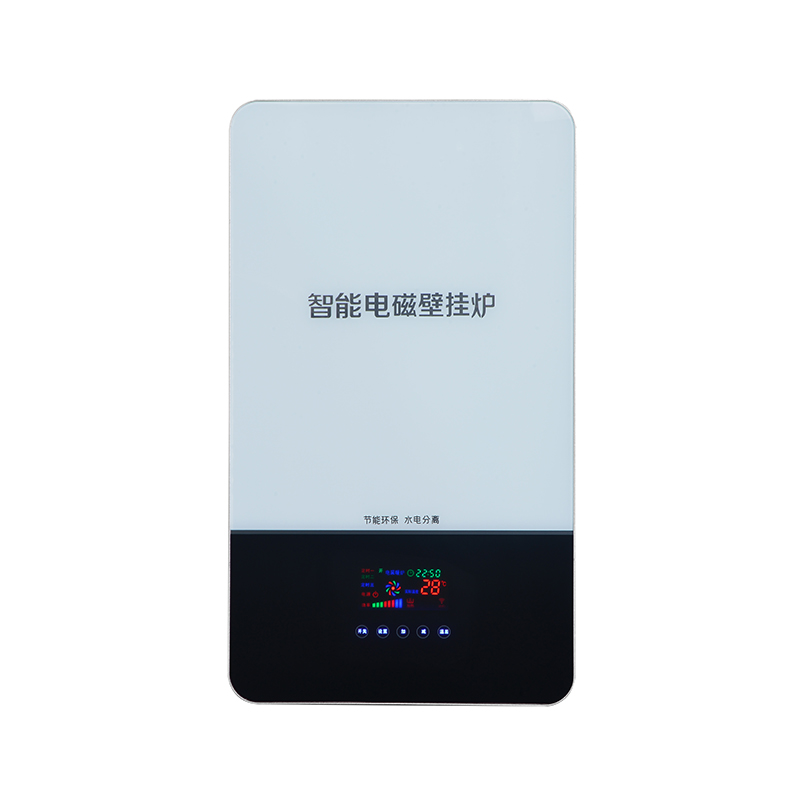How does the design of the coil in an electromagnetic heating furnace affect its heating efficiency?
Release Time : 2025-11-05
The design of the coil in an electromagnetic heating furnace is one of the core factors affecting its heating efficiency. Its material, structure, size, and winding process directly determine the energy conversion efficiency and the uniformity of heat distribution. As a key component of electromagnetic induction heating, the coil generates eddy currents at the bottom of the cookware through an alternating magnetic field, converting electrical energy into heat energy. Its design directly affects the heating speed, heat stability, and energy consumption.
The choice of material for the electromagnetic heating furnace coil plays a decisive role in heating efficiency. Currently, the mainstream coil materials are copper-clad aluminum and all-copper. While copper-clad aluminum coils are cheaper, the high resistivity of aluminum wire makes it prone to oxidation in humid environments, causing the current carrying capacity to decrease over time, making it impossible to maintain standard power output and leading to problems such as unstable heat and heating interruptions. All-copper coils, on the other hand, with their low resistance, strong conductivity, and corrosion resistance, can maintain stable power output for a long time, ensuring continuous and uniform heat. Their excellent thermal conductivity allows for rapid heat transfer to the cookware, significantly improving heating efficiency, making them particularly suitable for cooking scenarios requiring rapid heating.
The structural design of the electromagnetic heating furnace coil directly affects the uniformity of the electromagnetic field distribution. Double-layer coils, by stacking two layers of windings, expand the magnetic field coverage, resulting in more even heating of all areas of the pot bottom and preventing localized overheating or underheating. In contrast, single-layer coils, due to their concentrated magnetic field, are prone to causing excessively high temperatures at the center of the pot bottom and insufficient temperatures at the edges, resulting in a "spot boiling" effect—where water boils violently in some areas while other areas remain stagnant. The double-layer design alleviates this problem by optimizing the magnetic field distribution, while simultaneously improving heat utilization and reducing energy loss.
The size of the coil in an electromagnetic heating furnace is closely related to the heating area. A larger diameter coil can cover a larger area of the pot bottom, ensuring even heat distribution and preventing food from burning or uneven heating caused by concentrated heat. For example, a 200mm diameter coil can cover the bottom of most household cookware, ensuring that food is heated evenly throughout, improving cooking results. Small-diameter coils, due to their limited heating area, can only concentrate heating in the center of the pot, resulting in insufficient heating of food at the edges, requiring frequent stirring to compensate for the unevenness and reducing cooking efficiency.
The winding process of the coil also significantly affects heating efficiency and lifespan. Precision winding processes ensure uniform spacing between coil turns, reducing magnetic field leakage and energy loss, and improving heating efficiency. Simultaneously, superior winding enhances the structural stability of the coil, preventing deformation or loosening due to prolonged high-temperature operation and extending equipment lifespan. Some high-end coils utilize multi-strand stranded wire winding, further reducing high-frequency losses and increasing heating efficiency to over 90%, significantly superior to ordinary coils.
The compatibility between the electromagnetic heating furnace coil and the cookware is also a key factor affecting heating efficiency. The coil design must be adapted to the cookware's material, size, and shape to ensure efficient coupling of the magnetic field to the bottom of the cookware. For example, flat-bottomed cookware requires a flat coil, while concave-bottomed cookware requires a curved coil to maximize contact area and reduce energy waste. Furthermore, excessive spacing between the coil and the bottom of the cookware weakens the magnetic field strength, reducing heating efficiency; insufficient spacing may induce electromagnetic resonance, generating noise and affecting equipment stability.
The heat dissipation design of the electromagnetic heating furnace coil is crucial for maintaining efficient heating. During electromagnetic heating, the coil generates heat as current flows through it. Poor heat dissipation can lead to overheating, triggering a protection mechanism that automatically reduces the frequency or shuts down, interrupting the heating process. High-quality coils are typically equipped with concealed turbine fans or heat dissipation fins, using forced air cooling or natural convection to quickly dissipate heat, ensuring stable operation even in high-temperature environments and preventing efficiency degradation or equipment damage due to overheating.
The coil design of an electromagnetic heating furnace, through the synergistic effects of material selection, structural design, dimensional optimization, winding process, cookware compatibility, and heat dissipation management, directly impacts heating efficiency and the cooking experience. A well-designed coil improves energy conversion efficiency, achieves uniform heating, and extends equipment lifespan, providing users with an efficient, stable, and durable heating solution.





